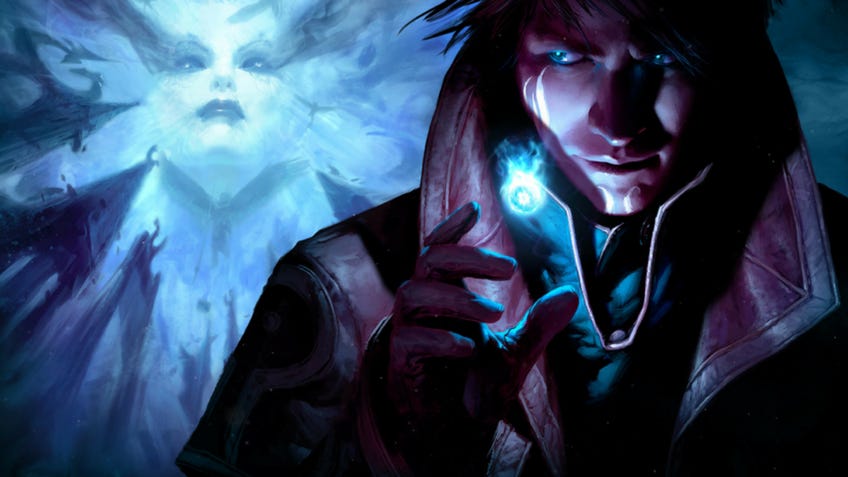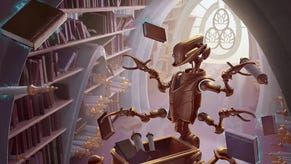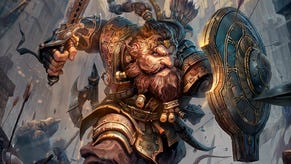10 best Dungeons & Dragons 5E subclasses you should play in your next campaign
Follow the Path of the Totem Warrior, become an Arcane Trickster and make a pact with The Fiend.
One of the most interesting parts of everybody’s favourite tabletop RPG, Dungeons & Dragons, is the opportunity to customise your character to the nth degree.
Deciding how to pick your character class in Dungeons & Dragons 5E, which determines the broad strokes of how your character interacts with the world and operates in combat, is the first step and will largely determine your experience of the roleplaying game. Working out how to choose your Dungeons & Dragons 5E race is more of a question of flavour, though does provide different bonuses and abilities depending on what you go for.
Beyond that, though, there are subclasses to choose between - variations of each class that further refine your character’s abilities. Want to play a Dungeons & Dragons 5E wizard who wears armour and favours a sword? A D&D 5E rogue who specialises in duelling? A druid who obsessively cultivates mushrooms? All are possible!
Best Dungeons & Dragons 5E subclasses
So whatever you want your character to be and however you play Dungeons & Dragons, there should be a perfect character subclass for you. Read on for a runthrough of the best Dungeons & Dragon 5E subclasses available to players that we think are interesting - you might just find something to include in your next campaign.
1. Arcane Trickster (Rogue)
Rogues are usually masters of sneaking and stabbing - not always in that order - and the Arcane Trickster subclass augments these shady abilities with spellcasting.
At third level, Arcane Tricksters pick up Mage Hand and two further wizard cantrips. Your Mage Hand can be made invisible, rifle through people’s pockets and pick locks at range, and at higher levels can be used to distract opponents mid-combat. You also pick up three first-level wizard spells - so long as they are in the enchantment or illusion schools - and more as your progress.
At ninth level and above, creatures who cannot see you gain disadvantage on saving throws against your spells, while at 17th you can literally steal spells cast on you by other creatures for up to eight hours.
The Dungeons & Dragons 5E rogue class is usually the party member most proficient in enchantment and illusion, so the Arcane Trickster specialisation usually lends itself best to pickpockets, thieves or even street performers. One of the best uses we’ve ever heard of was a thuggish half-orc rogue whose “spells” were, in fact, him shouting particularly loudly or throwing gloves filled with sand to act as a crude Mage Hands.
2. Path of the Totem Warrior (Barbarian)
It may seem like your party’s angry, loincloth-wearing axe-fan is a little one-note, but barbarian subclasses can send the class in interesting ways. The Path of the Totem Warrior sees them accepting a spirit animal as a guide, taking their strength to magically power their rages through a physical totem object that incorporates the fur, teeth or bones of the chosen animal.
At third level, you can pick one spirit animal of bear, eagle, elk, tiger or wolf (each is swappable for a creature more suited to your homeland, so your dreams of a huge, hairy spider-person are still achievable) and gain immediate benefits related to them. For example, tiger totems can jump higher and further while raging. You can pick further benefits at sixth and 14th levels.
From 10th level, you can also cast Commune with Nature as a ritual spell, summoning one of your animal guides to give you advice about the surrounding natural area. Though it might be tempting to ask your spiritual bear-parent for the best spot to pick a prickly pear, it can be used to determine the location of monsters, nearby towns or even the influence of other planes of existence.
3. College of Lore (Bard)
The College of Lore is one of two options open to bards of third level in the Player’s Handbook. Where the College of Valor focuses on hand-to-hand combat skills, the College of Lore sends your character further down the ‘jack of all trades’ path and reflects many of the most popular interpretations of the bard class in 5E, whether flamboyant performers, wizened storytellers or complete chancers.
The subclass is also powerful in Dungeons & Dragons 5E: not only can you add three more skill proficiencies onto your character sheet at third level, but you can upgrade your bardic inspiration dice to be used actively thanks to Cutting Words, which lets you subtract the number rolled from enemies’ attack rolls, ability checks or damage rolls, thanks to the distracting nature of your insults. It’s also a fun opportunity to roleplay some trash-talking and vent any DM frustrations you may have.
But the most useful boon from the College is Additional Magical Secrets: at sixth level, you can learn two spells of your choice from any class (in addition to those all bards can pilfer at 10th level). These include powerful class-restricted options like Fireball, Tenser’s Floating Disk, Teleport or - from 18th level - Wish.

4. School of Divination (Wizard)
While many players swear by the Bladesinger or War Magic specialisations to turn your robed spellcaster into a frontline fighter, the School of Divination gives Dungeons & Dragons 5E wizard players some unique tools that also allow for some fun roleplaying opportunities thanks to their clairvoyant powers. You also get the usual benefits to your divination spells, such as quicker spellbook copying times and regaining lower-level spell slots after casting from sixth level.
Starting at second level, divination wizards can peer into the future every time they finish a long rest, rolling two d20s (up to three at 14th level) and taking note of the numbers rolled. You can later use these rolls to replace any attack roll, saving throw or ability check made by you or a creature you can see once, until you take another long rest.
So, if you roll a 2 and a 3, you can force an attacking enemy to flub their weapon swing; if you roll a 19 and a 20, you can make your fighter score a couple of crucial critical hits in the same fight.
It’s a unique ability that can turn the tide of an encounter for better or for worse - and asks deeper questions about the nature of free will in a turn-based tabletop RPG.
5. Eldritch Knight (Fighter)
Much like the Arcane Trickster option for rogues, the Eldritch Knight boosts a purely martial class with some spellcasting abilities from the evocation and abjuration schools of magic. Starting at third level, they gain two cantrips and two first-level spell slots, plus a choice of many nasty surprises from the wizard spell list.
What makes this Dungeons & Dragons 5E subclass particularly strong, however, is the augmenting of your considerable battle prowess with said spells. For example Shield, which gives you +5 to AC for a round of combat as a bonus action, can make you nearly impossible to hit at low levels, while spells like Shadow Blade or buffs like Haste at higher levels make your multiple attacks even more nasty. This is helped by the War Magic feature, gained at seventh level, which allows you to make a weapon attack as a bonus action after casting a cantrip.
Arguably the coolest feature, though, is Weapon Bond; at third level, you can create a magical link between you and your favourite sharp or blunt implement, meaning you can magically summon it as a bonus action and have it appear in your hand from anywhere in the same plane of existence. Thor, eat your heart out.
6. Circle of the Moon (Druid)
I know we promised a mushroom-tending druid - and Circle of Spores is very cool, if a little underpowered - but the most powerful option for your favourite tree-hugger is the Circle of the Moon, thanks to its focus on your Wild Shape ability.
While retaining your potent spellcasting abilities, going down the lunar path at second level means you can transform into more dangerous animals, up to a challenge rating of 1. This includes direwolves, giant toads and - if you’re feeling in a tentacle-ish mood - giant octopuses. This ability gets exponentially better starting from sixth level - by eighth you’ll be able to animorph into flying dinosaurs or giant snakes.
Other bonuses include being able to use Wild Shape as a bonus action (rather than an action), using further bonus actions to regain 1d8 hit points in return for a spell slot and, from 10th level, transforming into powerful elemental forms.
7. The Fiend (Warlock)
Poor warlocks: universally considered the weakest of Dungeons & Dragons 5E’s character classes, but armed with some of the coolest roleplaying tools, the demon-followers do not see a lot of play. But choosing to make a pact with the Fiend when you create a D&D 5E warlock allows the class’s slightly janky spellcasting to become a lot more versatile.
First of all, an expanded spell list gives Fiend warlocks powerful spells like Burning Hands, Scorching Ray and Fireball. You can also sap temporary hit points from hostile creatures you bring down equal to your charisma modifier plus your warlock level, and from 10th level gain resistance to a chosen damage type, changeable once you rest.
From sixth level, call upon your devilish patron to alter fate in your favour - to the tune of a d10 that can be added to ability checks or saving throws once per short rest. At 14th, however, you get your most fiendish ability: once per long rest, you can instantly transport a creature you hit with an attack into the lower reaches of Hell for a turn, taking 10d10 psychic damage on their return.

8. Divine Soul (Sorcerer)
Dungeons & Dragon 5E sourcebook Xanathar’s Guide to Everything has a number of radically altered subclasses, of which the sorcerer's Divine Soul path is one of the most overpowered.
Put simply, sorcerers of this ilk are powered by an innate connection to a god; in practice this means that whenever these sorcerers are allowed to pick a new spell, they can choose from the cleric spell list as well as the sorcerer list, and gain an additional spell depending on whether they and their divine link have an affinity for good, evil, law, chaos or neutrality.
There are other bonuses, too. Favoured by the Gods allows you to add 2d4 to a failed saving throw or attack roll, Empowered Healing at sixth level lets you use your sorcery points to reroll low dice rolls when restoring bonuses, and Unearthly Recovery means you can instantly heal half your HP from 18th level. Among the most coveted is Angelic Form: starting at 14th, your sorcerer can summon spectral (but functional) wings as a bonus action.
9. Oathbreaker (Paladin)
Speaking of radically altered classes, the Oathbreaker option in the Dungeons & Dragons 5E Dungeon Master’s Guide transforms paladins from those dedicated to a particular cause to those that have broken their sacred vows to pursue a dark intent or serve an evil power. Edgy, sure, but it also allows you to play a broken, world-weary holy warrior rather than a goody-two-shoes.
They are also pretty handy as damage dealers. Starting at third level, Oathbreakers gain access to some darker spells - including Inflict Wounds, Animate Dead and Contagion - and can use their Channel Divinity to control undead creatures or frighten nearby creatures. At seventh, they and any fiends or undead nearby can add their Charisma modifier to damage rolls, and at 15th they gain resistance to damage from non-magical weapons.
At 20th level things get real: Oathbreakers can use their action to become a Dread Lord, dimming nearby lights, causing heavy damage to any frightened creatures and summoning the shadows themselves to attack nearby targets. Spooky and effective.
10. Forge Domain (Cleric)
While many players and party members expect clerics to be healing sycophants, there are lots of Dungeons & Dragons 5E subclass options that can turn them into absolute monsters of damage dealers - Storm Domain, we’re looking at you. Clerics dedicated to the gods of the forge domain favour heavy armour, fancy weapons and potent magic items alongside their divine powers, and have several unique factors that make them a boon to any party of adventurers.
Functionally, this gives you access to a range of fire and weapon-based spells in addition to the usual cleric options. From first level, Forge Clerics can also imbue magic into weapons or armour, improving their stats until they finish a long rest, while from second they can use their Channel Divinity to create items out of thin air, including martial weapons, suits of armor, ten pieces of ammunition or any “metal object”, which can include copies of keys you have.
Further down the line, Forge Clerics’ devotion to shirtless blacksmithing makes them even more hardy in combat, thanks to Soul of the Forge’s defensive bonuses and Divine Strike at sixth level, which lets you add fire damage to your weapon attacks once per turn. By 17th level, thanks to the Saint of Forge and Fire perk, you can even become immune to fire damage and resistant to non-magical weapons.










